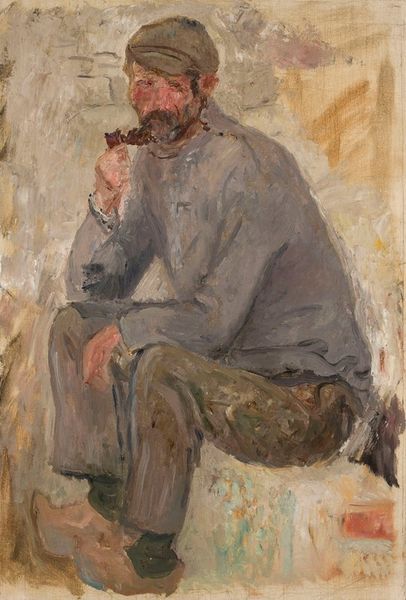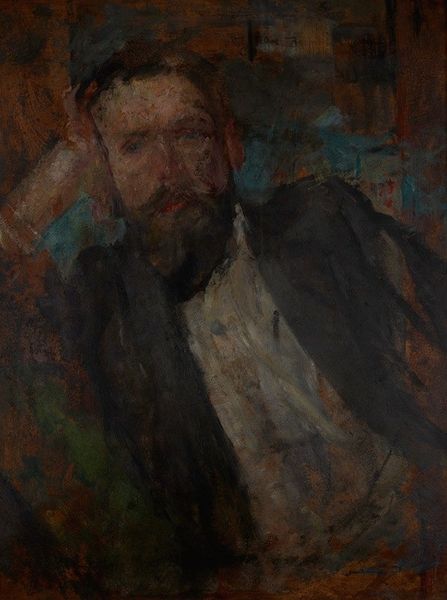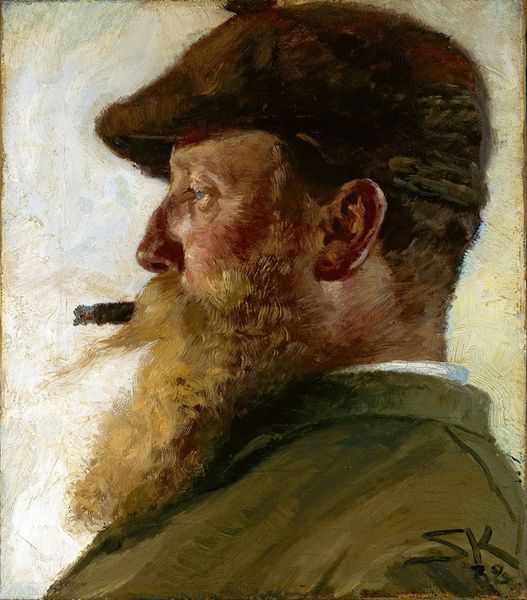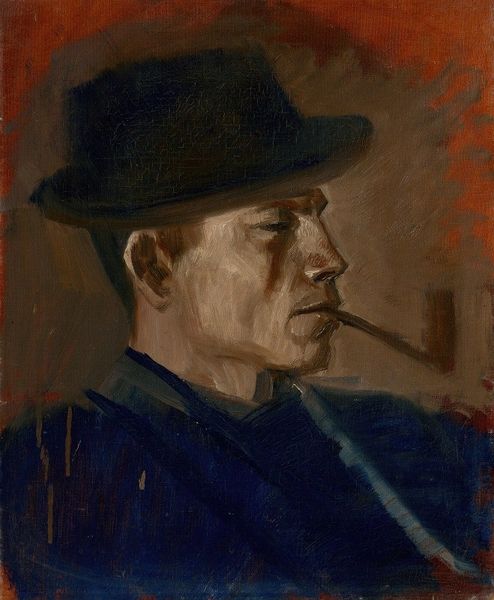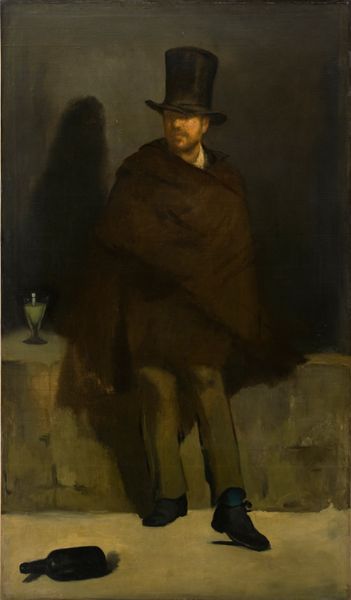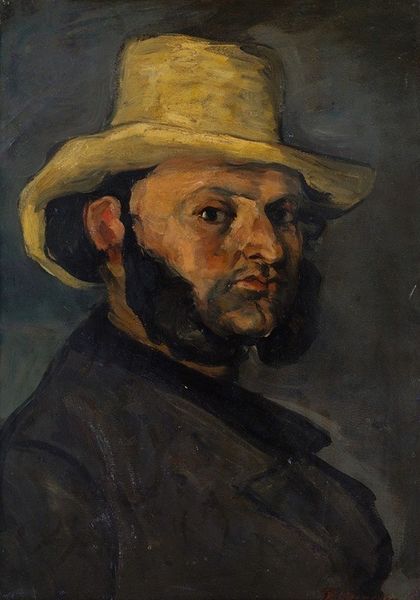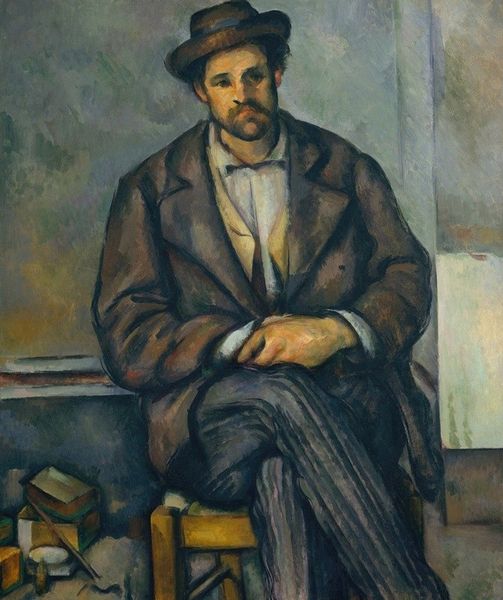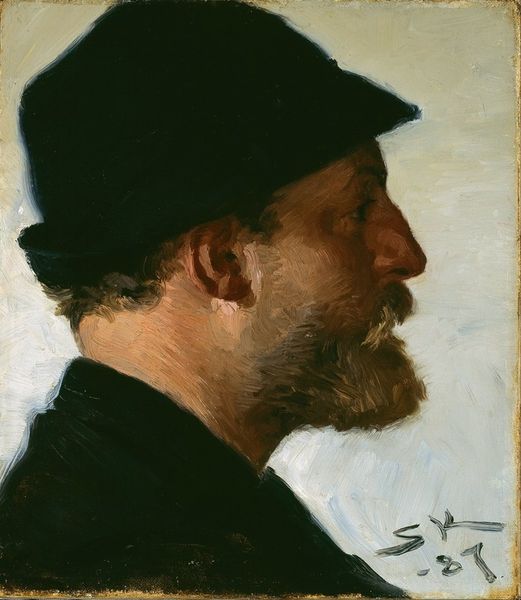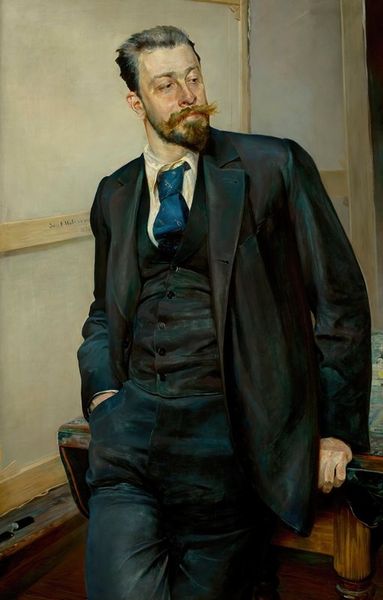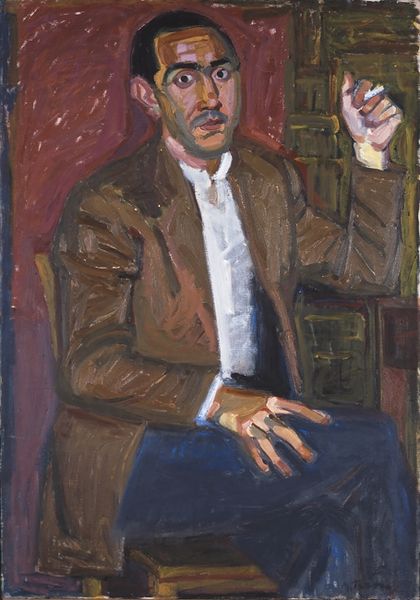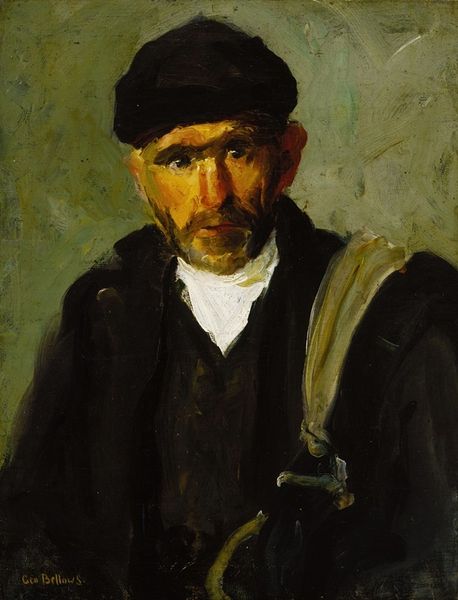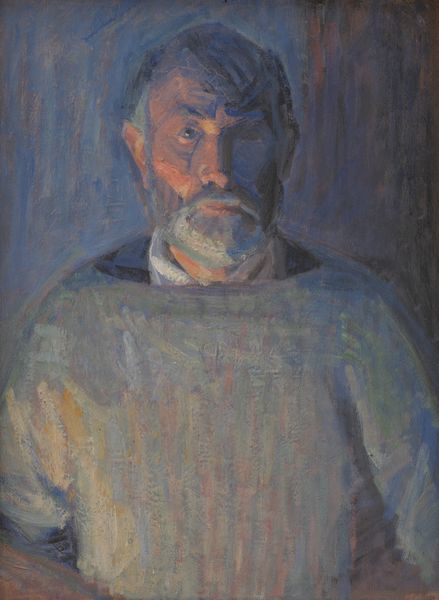
oil-paint
#
portrait
#
figurative
#
impressionism
#
oil-paint
#
oil painting
#
portrait drawing
#
post-impressionism
#
portrait art
Copyright: Public Domain: Artvee
Editor: So, here we have Edvard Munch's 1889 oil painting, "Hans Jæger." There’s a quiet intensity to it. It feels very personal, almost like a captured moment of introspection. What's your take? Curator: Munch’s portrait of Hans Jæger, a writer and leading figure in Kristiania Bohemia, provides an interesting lens to view the cultural anxieties of the late 19th century. Jæger was a controversial figure who advocated for free love and challenged societal norms through his writing. How do you think Munch uses portraiture to engage with Jæger's public image? Editor: Hmm, interesting. The way Munch captures him – slumped, almost melancholic – seems to undercut the revolutionary figure I'd expect. Could Munch be commenting on the personal cost of Jæger’s public persona? Curator: Precisely! Consider how the work's reception may have been shaped by public opinion surrounding Jæger and his scandalous views. Did viewers interpret it as an endorsement, a critique, or a sympathetic portrayal? Editor: That's a crucial point. I was so focused on the subject that I didn't immediately consider the broader societal context and how that would have impacted viewers. Curator: The institutional framework of the art world is critical to consider. Public exhibition was uncommon at that time, influencing both the availability and acceptance of such unconventional imagery. Editor: This painting really does invite you to look beyond the surface and consider the political and cultural implications, even the artist's motivation. Thanks! Curator: Indeed, it reminds us of the complex relationship between art, artist, and audience within a particular historical context.
Comments
No comments
Be the first to comment and join the conversation on the ultimate creative platform.
